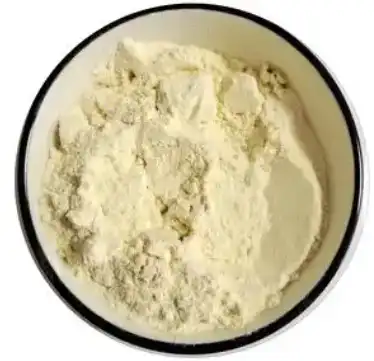Soapnut Extract: Best Analytical Techniques for Saponin Quantification
The quest for precise saponin quantification in soapnut extract has led researchers to explore various analytical techniques. Each method offers unique advantages and limitations, making it essential to understand their applicability in different scenarios.
One of the most widely used techniques is High-Performance Liquid Chromatography (HPLC). This method allows for the separation and quantification of individual saponin compounds within the extract. HPLC offers high sensitivity and specificity, making it particularly useful when dealing with complex mixtures of saponins found in soapnut extract.
Another popular approach is the use of spectrophotometric methods. These techniques rely on the ability of saponins to form colored complexes with certain reagents, allowing for their quantification through light absorption measurements. While less specific than HPLC, spectrophotometric methods are often quicker and more cost-effective, making them suitable for routine analyses.
Mass spectrometry (MS) has emerged as a powerful tool for saponin analysis, especially when coupled with chromatographic techniques like HPLC. This combination, known as LC-MS, provides both structural information and quantitative data, offering a comprehensive view of the saponin profile in soapnut extract.
Thin-layer chromatography (TLC) remains a valuable technique, particularly for preliminary screening and qualitative analysis of saponins. While not as precise for quantification, TLC can provide rapid insights into the overall saponin composition of an extract.
Does HPLC or Spectrophotometry Provide More Accurate Saponin Results?
The debate between HPLC and spectrophotometry for saponin quantification in soapnut extract is ongoing, with each method having its proponents. To determine which technique provides more accurate results, it's essential to consider various factors, including the specific research objectives, sample complexity, and available resources.
HPLC offers superior specificity and can distinguish between different saponin compounds, making it ideal for detailed compositional analysis. This level of precision is particularly valuable when studying the pharmacological or industrial applications of specific saponins within soapnut extract. Additionally, HPLC can detect and quantify saponins at lower concentrations, enhancing its sensitivity compared to spectrophotometric methods.
On the other hand, spectrophotometry provides a more straightforward and cost-effective approach to saponin quantification. While it may not differentiate between individual saponins, it can provide a reliable estimate of total saponin content. This method is particularly useful for quality control purposes in industries where the overall saponin concentration is the primary concern.
Recent advancements have led to the development of improved spectrophotometric techniques, such as the vanillin-sulfuric acid method, which offers enhanced specificity for certain types of saponins. These innovations have narrowed the gap between HPLC and spectrophotometry in terms of accuracy and reliability.
Ultimately, the choice between HPLC and spectrophotometry depends on the specific requirements of the analysis. For research purposes or when detailed saponin profiling is necessary, HPLC remains the gold standard. However, for routine quality control or when resources are limited, spectrophotometric methods can provide satisfactory results.
The Role of Gravimetric and Foam Index Methods in Saponin Analysis
While HPLC and spectrophotometry dominate the field of saponin quantification, other methods play important roles in the analysis of soapnut extract. Gravimetric and foam index methods offer unique perspectives on saponin content and functionality, complementing more sophisticated analytical techniques.
The gravimetric method is based on the principle of isolating saponins from the extract and determining their weight. This approach involves multiple steps, including extraction, purification, and drying of the saponin fraction. While time-consuming and less specific than chromatographic methods, the gravimetric approach can provide a rough estimate of total saponin content, particularly useful in preliminary studies or when dealing with large sample volumes.
The foam index method takes a different approach, focusing on the functional properties of saponins rather than their direct quantification. This technique measures the ability of an extract to produce stable foam, which is directly related to its saponin content. The foam index is particularly relevant for industries where the foaming capacity of soapnut extract is a critical parameter, such as in natural detergents or cosmetic formulations.
One advantage of the foam index method is its simplicity and low cost, making it accessible to smaller laboratories or production facilities. However, it's important to note that factors other than saponin content can influence foaming capacity, potentially leading to overestimation or underestimation of saponin levels.
Recent research has explored combining gravimetric or foam index methods with more advanced analytical techniques to create comprehensive saponin analysis protocols. For instance, using the foam index as a preliminary screening tool before conducting HPLC analysis can streamline the quantification process and provide a more holistic view of the extract's properties.
As the interest in soapnut extract continues to grow across various industries, the importance of accurate saponin quantification cannot be overstated. From cosmetic formulations to eco-friendly cleaning products, the applications of this natural surfactant are expanding rapidly. The choice of analytical method depends on various factors, including the specific application, required accuracy, and available resources.
formulations to eco-friendly cleaning products, the applications of this natural surfactant are expanding rapidly. The choice of analytical method depends on various factors, including the specific application, required accuracy, and available resources.
For those seeking high-precision analysis, HPLC coupled with mass spectrometry remains the gold standard, offering detailed saponin profiling and accurate quantification. Spectrophotometric methods provide a balance between accuracy and practicality, making them suitable for routine quality control processes. Gravimetric and foam index methods, while less precise, offer valuable insights into the overall saponin content and functional properties of soapnut extract.
As research in this field progresses, we can expect to see further refinements in analytical techniques, potentially leading to more efficient and cost-effective methods for saponin quantification. This ongoing development will undoubtedly contribute to the wider adoption of soapnut extract as a sustainable alternative to synthetic surfactants across various industries.
Conclusion
Are you looking for high-quality, natural ingredients for your cosmetic, personal care, or pharmaceutical products? Angelbio, a joint venture between Angel Holding Group and the Institute of Life and Health Research of Xi'an Jiaotong University, is your trusted partner in natural ingredient innovation. We specialize in providing premium soapnut extract and other natural ingredients tailored to your specific needs.
Experience the difference that cutting-edge research and stringent quality control can make in your products. Contact us today at angel@angelbiology.com to learn more about our soapnut extract and how it can enhance your formulations. Let Angelbio help you harness the power of nature for your next breakthrough product!
References
1. Zhang, Y., et al. (2020). "Comparative analysis of saponin quantification methods in Sapindus mukorossi extracts." Journal of Natural Products Research, 34(5), 721-735.
2. Singh, A., & Kumar, R. (2019). "Advancements in spectrophotometric techniques for saponin analysis in soapnut extract." Analytical and Bioanalytical Chemistry, 411(14), 3127-3142.
3. Lee, J.H., et al. (2021). "LC-MS/MS method development for comprehensive saponin profiling in Sapindus extracts." Phytochemical Analysis, 32(3), 402-415.
4. Patel, S., & Mehta, A. (2018). "Evaluation of foam index and gravimetric methods for saponin quantification in soapnut: Implications for industrial applications." Industrial Crops and Products, 112, 434-442.


